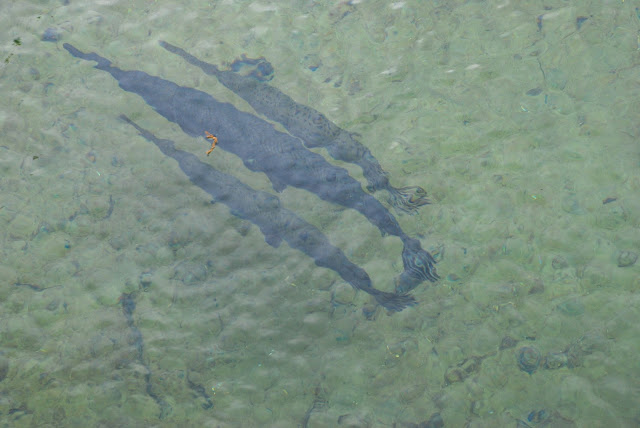⏳ Mar 2018
Crystal River State Park
The Crystal River Preserve is a remnant of the Florida coastline that has changed little since Europeans more than 500 years ago. It is located in a transitional area from a temperate and sub-tropical climate zone and contains plants and animals from both regions. The preserve follows 20 miles (30 km) of coastline along the Gulf of Mexico from Crystal River though Ozello to Homosassa. The Crystal River Archaeological State Park is located within the park boundary and managed by the Crystal River Preserve State Park (Wikipedia).
Boat Tour

 |
| Osprey Chick |
 |
| Osprey chick asking for food |
 |
| Osprey Chick Learning to Fly: Landing |
 |
| White Ibis |
 |
| Bald eagle |
Ozello
Ozello consists of several keys which are connected by The Ozello Trail (C.R. 494) a twisting roadway that has several sharp curves running west off of U.S. 19-98. The trail is very popular with motorcyclists, and features a great deal of wildlife scenery (Wikipedia).
 |
| Camouflaged Green Heron |
 |
| Great Blue Heron with Fish Head |
Homosassa Springs Wildlife State Park
The park is one of the best places in the state to view manatees. Visitors can get close to the animals on a floating observatory. Black bears, bobcats, white-tailed deer, American alligators, and river otters can also been seen in the park. The park is also home to the hippopotamus Lu, famously known for his performances in many movies for the past 40 years. The park is officially named Ellie Schiller Homosassa Springs Wildlife State Park in honor of Elmyra Felburn Schiller (1943 – 2009), a benefactor of the Florida state park system.
Native Americans lived in the area of Homosassa Springs, Florida long before the first non-indigenous people entered the area. Within 200 years of encounter the original inhabitants of the area were decimated by disease and colonial warfare. Soon after the area was re-settled by several groups of Native Americans displaced from other areas, including the Seminoles and Miccosukee.
The springs are a historical attraction with documented accounts of tourism dating back to the 1880s. In the 1920s the attraction was expanded to several structures which no longer exist, and a public swimming area was located at the spring. The 1940s led to more expansion, along with the construction of the first underwater observatory which consisted of an iron tank with small windows on each side (Wikipedia).
 |
| Wood duck chicks saved from blue heron |
 |
| Male Anhinga |
 |
| Wood duck couple |
 |
| Florida gar (Lepisosteus platyrhincus) |
 |
| Common snook (Centropomus undecimalis) or sergeant fish |
 |
| West Indian Manatee |
 |
| Florida panther |
 |
| Black-crowned Night-Heron |
 |
| Double-crested Cormorant |
 |
| Brown Pelican |
 |
| American White Pelican (one of 2 species of Florida pelicans). 8 pelican species in the world. |
 |
| Roseate Spoonbills |
 |
| Green Heron |
 |
| Wood stork (Mycteria americana) |
 |
| Black-bellied whistling duck |
 |
| American flamingo (Phoenicopterus ruber), the only flamingo that naturally inhabits North America |
 |
| Crested Caracara. Often feeds on carrion. Aggressive, it may chase vultures away from road kills. Widespread in the American tropics, it enters U.S. only near the Mexican border and in Florida. "Caracara" comes from a South American Indian name, based on the bird's call. Sounds. |
 |
| Red fox (Vulpes vulpes) naturalized in Florida (native to boreal and western montane portions of North America). As many as 10,000 live in London; they colonized the city after World War II. Gray fox is the other fox in Florida. See list of Florida mammals. |
 |
| Lu the Hippo |
Previous |
Main |
 Next |
⏳ Mar 2018


























































































































